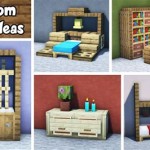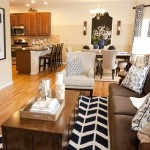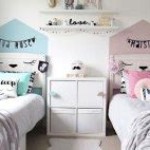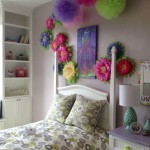How to Decorate a Small Open Plan Kitchen, Living Room, and Dining Area
Open-plan living has gained immense popularity in modern home design, offering a sense of spaciousness and enhanced social interaction. However, decorating a small open-plan kitchen, living room, and dining area presents specific challenges. The goal is to create a cohesive and functional space that feels both inviting and uncluttered. Careful consideration of layout, color schemes, furniture choices, and storage solutions is crucial for achieving a successful design.
Defining Zones with Rugs and Flooring
In an open-plan space, visually defining each zone is essential. Rugs are a simple yet effective tool for achieving this. A large area rug under the living room furniture anchors the space and creates a distinct gathering area. Similarly, a rug under the dining table demarcates the eating zone. Opt for rugs that complement each other in color and style but aren't identical, preventing a monotonous look. Consider the rugs’ material based on the functionality of each zone. For instance, a durable, stain-resistant rug is preferable in the dining area. It reduces the impact of potential spills and is simple to maintain.
Flooring also plays a crucial role in defining zones. While maintaining consistent flooring throughout the open-plan area can create a sense of unity, transitioning to different flooring types, even subtly, can highlight specific zones. For example, tile or vinyl flooring in the kitchen area can be practical and visually distinct from hardwood flooring in the living and dining areas. When selecting flooring, consider durability, ease of maintenance, and its impact on the overall aesthetic.
Another approach involves using area rugs on the same type of flooring. Using different pile heights and texture can subtly differentiate the zones without dramatically changing the flooring material. This approach assists those who want a minimalist and cohesive look while still defining individual spaces.
Optimizing Furniture Selection and Placement
Furniture selection and placement are paramount in a small open-plan space. Prioritize multi-functional furniture pieces that serve multiple purposes. A storage ottoman can act as a coffee table and provide additional storage. A sofa bed offers extra sleeping space for guests without taking up permanent bedroom space. Consider extendable dining tables or drop-leaf tables that can be adjusted according to need. This type of furniture expands to accommodate larger gatherings and collapse to save space during everyday use.
When placing furniture, avoid overcrowding the space. Leave ample walking space to ensure easy flow and prevent the area from feeling cramped. Arrange furniture to encourage conversation and interaction within each zone. In the living room, create a focal point, such as a fireplace or a feature wall, and arrange seating around it. Consider a sectional sofa to maximize seating without taking up excessive space, also L-shaped sofas are a good choice for corner configurations. In the dining area, position the table to allow easy access and movement around it. Avoid placing large furniture pieces that obstruct views or create visual barriers. Transparent or open shelving can provide storage without blocking light or creating a sense of confinement.
Scale is also important. Large, bulky furniture can overwhelm a small space. Opt for furniture pieces that are appropriately sized for the area. Incorporating furniture with legs can create a sense of lightness and airiness, as visual space flows under the furniture instead of being blocked off.
Maximizing Vertical Space and Storage Solutions
In a small open-plan space, maximizing vertical space is crucial for storage and organization. Utilize wall-mounted shelves, cabinets, and storage units to free up floor space. Install shelves above the kitchen counters, in the living room, and in the dining area to display decorative items, store books, or organize essentials.
Consider incorporating built-in storage solutions, such as a custom-built shelving unit or a banquette with storage underneath. These solutions seamlessly integrate storage into the design and maximize space utilization. In the kitchen, install tall cabinets that reach the ceiling to provide ample storage for cookware, appliances, and pantry items. Utilize the space above the refrigerator by installing a cabinet or shelf. Under-cabinet lighting in the kitchen helps to brighten the work area and reduce the feeling of confinement. Use vertical organizers in cabinets and drawers to maximize storage efficiency. For the living room, consider floating shelves, which are aesthetically pleasing and save floor space.
Smart storage solutions extend beyond furniture. Consider using baskets, bins, and containers to organize items on shelves and in cabinets. Label storage containers to easily identify their contents. Utilize wall-mounted organizers for mail, keys, and other small items. A coat rack or wall-mounted hooks near the entrance can help to keep clutter at bay.
Employing Color and Lighting Strategies
Color and lighting significantly impact the perception of space in a small open-plan area. Opt for a light and neutral color palette to create a sense of spaciousness and brightness. Light colors reflect light, making the area feel larger and more airy.
Use different shades of the same color to add depth and visual interest without overwhelming the space. Incorporate accent colors through accessories, textiles, and artwork to add personality and vibrancy. Bold accent colors can be used sparingly to highlight specific features or create focal points. When painting, consider using a lighter color on the ceiling to create the illusion of height.
Lighting is equally important. Layer lighting to create a warm and inviting atmosphere. Incorporate ambient lighting, task lighting, and accent lighting. Ambient lighting provides overall illumination, task lighting focuses on specific areas, such as the kitchen countertop or reading nook, and accent lighting highlights decorative elements or architectural features. Use a combination of ceiling fixtures, floor lamps, table lamps, and pendant lights to create a well-lit and balanced space.
Natural light is also a crucial element. Maximize natural light by keeping windows clean and free from obstructions. Use sheer curtains or blinds to allow light to filter through while maintaining privacy. Mirrors can be strategically placed to reflect light and create the illusion of more space.
Maintaining Cohesion and Flow
Maintaining cohesion and flow is critical in a small open-plan space. This involves creating a unified design that seamlessly connects each zone. Use consistent design elements, such as color schemes, materials, and styles, throughout the area to create a harmonious look. A common thread, whether it's a specific design style or a recurring motif, helps tie the space together.
Ensure that the flow of movement between zones is seamless and intuitive. Avoid placing furniture or objects that obstruct pathways or create visual barriers. Create clear pathways by arranging furniture to guide movement. Use consistent flooring or rugs to transition between zones. Employ visual cues, such as artwork or accessories, to guide the eye and create connections between different areas. Consider the placement of doorways and openings to ensure that they are strategically located to facilitate movement and flow.
Consistent design elements can be achieved in a variety of ways. Using the same hardware finish on cabinets and furniture, repeating patterns in textiles, or incorporating similar textures throughout the space are all effective strategies. Maintaining a consistent level of formality or informality can also contribute to cohesion. For example, if the living room is designed to be casual and comfortable, the dining area should reflect a similar atmosphere.
Incorporating Greenery and Natural Elements
Incorporating greenery and natural elements can bring life and vibrancy to a small open-plan space. Adding plants can help to purify the air, create a sense of calm, and add a touch of nature to the interior. Choose plants that are appropriate for the light conditions and maintenance requirements of the space.
Consider incorporating natural materials, such as wood, stone, and bamboo, into the design. These materials add warmth, texture, and visual interest to the space. Use wood furniture, stone countertops, or bamboo blinds to create a connection to nature. Natural textures, such as woven baskets, linen fabrics, and jute rugs, add depth and dimension to the design.
Arranging plants strategically can enhance the overall aesthetic. Place taller plants in corners or near windows to add height and visual interest. Use smaller plants on shelves, countertops, and tables to add pops of green throughout the space. Create a focal point with a large potted plant or a vertical garden. Incorporating natural elements extends beyond plants. Seashells, stones, or driftwood can be displayed on shelves or in decorative bowls to create a connection to the natural world.
Decluttering and Minimizing Possessions
Decluttering and minimizing possessions are essential for maintaining a sense of spaciousness and order in a small open-plan area. Regularly declutter the space to remove unnecessary items and keep only essential possessions. Get rid of items that are no longer used, needed, or loved. Donate, sell, or recycle unwanted items to reduce clutter.
Adopt a minimalist approach to decorating by selecting only a few carefully chosen decorative items. Avoid overcrowding the space with excessive decorations or knick-knacks. Focus on quality over quantity by investing in a few well-designed and functional items. Use storage solutions to organize and conceal clutter. Keep surfaces clear and uncluttered to create a sense of calm and order.
Implementing a regular decluttering routine can help to maintain a clutter-free environment. Set aside time each week or month to declutter specific areas of the space. Use a checklist to ensure that all areas are addressed. Involve other members of the household in the decluttering process. Consider adopting a one-in, one-out policy, where for every new item that is brought into the space, an old item is removed.

How To Design An Open Plan Kitchen And Living Room

Small Open Plan Home Interiors

How To Design An Open Plan Kitchen And Living Room

How To Arrange Furniture In Your Open Plan Kitchen Living Dining Room The House

7 Small Open Plan Kitchen Living Room Ideas Proficiency

How To Decorate An Open Plan Kitchen Living Room Dulux
How To Style Layout An Open Plan Living Dining Room Combo
:max_bytes(150000):strip_icc()/WhiteSands_Pine_008-5555f6a4cbdb410ea74bde652e9d73f5.jpg?strip=all)
28 Open Kitchen Living Room Ideas To Create A Cohesive Space
:max_bytes(150000):strip_icc()/MichelleBoudreau8926Revision-4318x2880x368x0x3840x2880x1664884559-2756c4d88fc948f29b52ac17580b1912.jpg?strip=all)
28 Open Kitchen Living Room Ideas To Create A Cohesive Space

10 Creative Small House Open Concept Kitchen And Living Room Hooked Home
Related Posts







